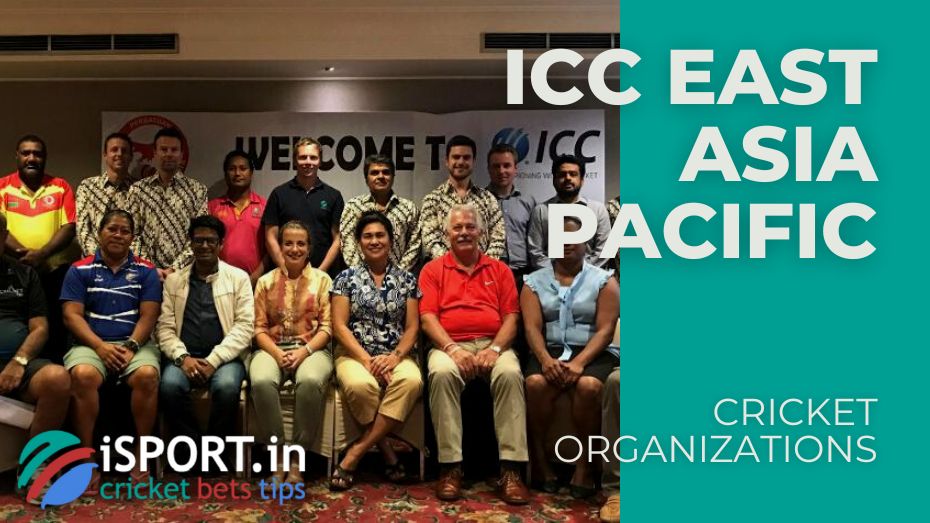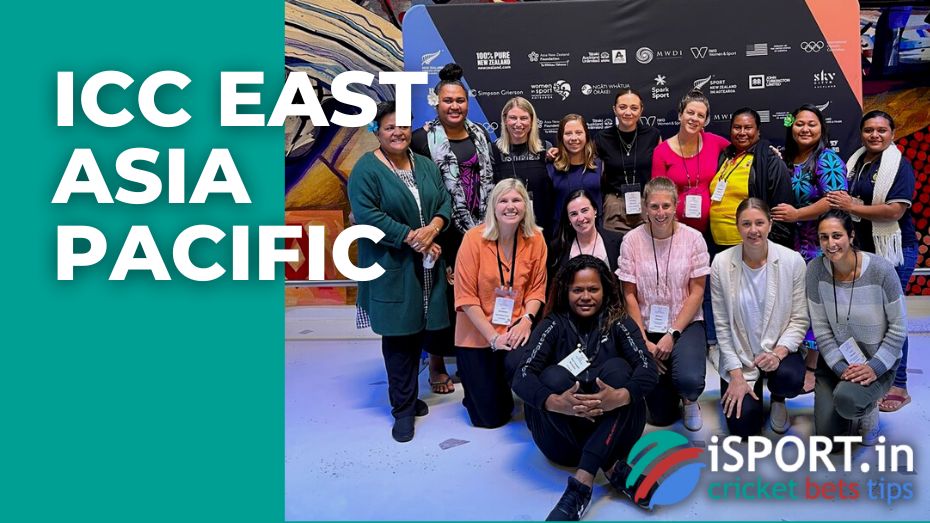ICC East Asia Pacific

The smallest regional association in the world of cricket is ICC East Asia-Pacific. The council was founded in 1996. The Head of ICC East Asia-Pacific is Andrew Faichney. He is also a Regional Development Specialist at the International Cricket Council.
ICC East Asia-Pacific: history of creation
Now you can often hear praise addressed to the Asian region, and they will be relevant in many areas of activity, particularly in sports. It is the most progressive region in the world of cricket. In 1909, a union was formed that later became known as the International Cricket Council. Asians were the first to decide to organize a regional association – the Asian Cricket Council. It has existed since 1983. In the mid-90s of the 20th century, it became clear that teams from Asia, Australia and the Pacific region were too close to exist in one association. In 1996, it was decided to create a new association – the ICC East Asia-Pacific. The national federations of East Asia, Australia and the Pacific should be included in it.
ICC East Asia-Pacific: members
The ICC East Asia-Pacific consists of 11 participants. The organization’s office was opened in 1999 and is based in Melbourne. This city is not the capital of Australia (Canberra is endowed with this status), but it is considered the southernmost millionaire city globally. More than 4.2 million inhabitants live here. Melbourne has repeatedly been included in the lists of the most comfortable cities to live in. In the sports world, Melbourne is known for hosting the Australian Open (one of the four Grand Slam tournaments in tennis) and the Formula 1 stage.
Unsurprisingly, Australia is a full member of the ICC East Asia-Pacific. The national federation of New Zealand can also boast of it. At the world level, Australians perform better. They were one of the three founders of the modern International Cricket Council. The men’s national team Australia is in the top 5 of the world rankings in all cricket formats. This team is the most successful in the ODI format, where it occupies the second position (in the T 20I category – the fifth, in the Test category – the fourth). The New Zealand men’s team has fewer major titles but has been strong in all formats lately. So, this team became the leader in the ODI category in 2021. New Zealanders are in the top three in other formats as well.
Note that in the Asian region, five teams are full-fledged members. These are Afghanistan, Bangladesh, India, Pakistan and Sri Lanka. The independent state of Papua New Guinea is considered to be an Associate Member of ICC East Asia-Pacific with ODI and T20I statuses.
The rest of ICC East Asia-Pacific members have T20I associative status:
- In 1996, Fiji, Japan, Vanuatu joined the association.
- In 2000, Cook Islands, Philippines, Samoa became members of East Asia-Pacific.
- In 2001, Indonesia and South Korea received the status of members of the organization.
Note that three current members of ICC East Asia-Pacific were members of the Asian Cricket Council before the organization was formed: Fiji, Japan and Papua New Guinea.
In 2013, the membership in the ICC East Asia-Pacific of the national federation of Tonga was suspended. The reason is rather strange, but as it is: the federation did not have a full-time administrator at the rate. The local federation was given six months to resolve the issue, but the problem was not resolved during this time. As a result, in 2014, Tonga was finally excluded from the regional association.

ICC East Asia-Pacific: tournaments
The ICC East Asia-Pacific regularly conducts seminars for coaches, sports doctors. Also, camps for talented children of the region are often organized. Of course, the ICC East Asia-Pacific organizes major continental tournaments. Among them, the ICC EAP Cricket Trophy stands out. Australia and New Zealand do not participate in it. In their absence, other teams have the opportunity to qualify for the World Cup. Since 2005, the tournament has been held in the limited-overs format, since 2011 – in the Twenty20 format.
The Trans-Tasman Trophy has a long history. This tournament for the two strongest national teams of the region – Australia and New Zealand – has been held since 1985. In these competitions, national team players meet once or several times during a certain period. In the first three draws, the series consisted of three matches. Whoever won more won the trophy. In case of a draw, the title remained with the reigning champion. In 1989 and 1990, the teams decided to hold separate series, in each of which a match was played. The idea did not catch on, so they returned to a series of three fights later. In 2004 and 2005, it was decided to play two matches in the series. The teams did not reject this format. Now, depending on the workload of the calendar within the Trans-Tasman Trophy, Australia and New Zealand play twice or three times during the season. Australians are more likely to win.
Since 2004 the Chappell – Hadlee Trophy has been held. This tournament is also attended only by the national teams of Australia and New Zealand.
The competition is named after famous families from two countries: Australian brothers Chappell (Ian, Gregory and Trevor) and New Zealander Walter Hadlee and his three sons (Barry, Dayle and Sir Richard). Games are played in ODI format. In 2011, the teams played on neutral territory – in India. During the Chappell – Hadlee Trophy, the Australians have won six times, the New Zealanders have four wins. The series ended in a draw twice.
